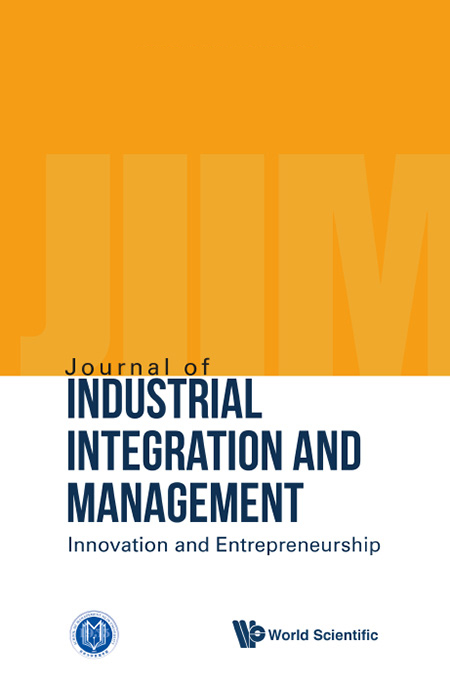Chief Technology Officers: One Mission, Different Organizational Roles
IF 3.3
Q2 MANAGEMENT
Journal of Industrial Integration and Management-Innovation and Entrepreneurship
Pub Date : 2019-08-07
DOI:10.1142/S2424862219500052
引用次数: 2
Abstract
This paper is dedicated to the technology management issue in the context of increasing requirements and challenges that modern executives have to face regarding efficient and proactive technology and innovation management, support of new product and service lines, and business development. The main focus of this research is the diversity of organizational roles performed by top and middle managers experiencing a strong impact of the “technological factor”. Those executives who officially occupy the highest position associated with technology responsibilities are called Chief Technology Officers (CTOs). At the same time, in many companies — especially in small- and medium-sized enterprises (SMEs) — such a position is not officially given. The managers who partially or fully perform the CTO functionality even if they do not have this official post are respectively named “Hidden” CTOs. At the same time, it is important to note that despite the presence in practice of more than 40 years, the term CTO is still associated with lots of controversy. There are dozens of contradictory definitions and disputes between practitioners and theorists that lead to a blurring of the CTO term meaning. In practice, it can be observed that the contradictions about the functionality of a technology manager can lead to the fact that the management potential cannot be fully activated and that management priorities are set incorrectly or unclearly. This paper presents a new approach to the CTO position definition based on the analysis of internal and external specifics combined with change management dynamics. Further, this new approach was used as the framework for an empirical study, based on a semi-structured questionnaire and personal interviews. In the study, the roles of international executives dealing with technological topics were investigated. The first results of the study have shown that modern technology executives are not narrowly profiled specialists focusing on purely technological issues. They are increasingly appointed as members of the top management team (TMT), for bringing in the technological perspective in the general management process. In their function, they link up between different stakeholders in terms of technology efficient use and their progressive development.首席技术官:一个使命,不同的组织角色
本文致力于在不断增长的要求和挑战的背景下,技术管理问题,现代高管必须面对有关高效和主动的技术和创新管理,支持新产品和服务线,以及业务发展。本研究的主要焦点是受到“技术因素”强烈影响的中高层管理人员所扮演的组织角色的多样性。那些正式占据与技术责任相关的最高职位的高管被称为首席技术官(CTOs)。与此同时,在许多公司,特别是在中小型企业(SMEs)中,这样的职位并没有正式授予。部分或全部履行CTO职能的经理,即使他们没有这个正式职位,也分别被称为“隐藏”CTO。与此同时,值得注意的是,尽管CTO在实践中存在了40多年,但该术语仍然与许多争议有关。从业者和理论家之间有许多相互矛盾的定义和争议,导致了CTO术语含义的模糊。在实践中,可以观察到,关于技术经理功能的矛盾可能导致管理潜力不能充分发挥,管理优先级设置不正确或不明确。本文在分析企业内外部特征的基础上,结合变革管理动态,提出了一种新的CTO职位定义方法。此外,这种新方法被用作基于半结构化问卷和个人访谈的实证研究框架。在这项研究中,研究了处理技术问题的国际行政人员的作用。该研究的第一个结果表明,现代技术高管并非局限于专注于纯技术问题的专家。他们越来越多地被任命为最高管理团队(TMT)的成员,因为他们在一般管理过程中引入了技术观点。在其功能上,它们在技术的有效利用和技术的逐步发展方面将不同的利益相关者联系起来。
本文章由计算机程序翻译,如有差异,请以英文原文为准。
求助全文
约1分钟内获得全文
求助全文
来源期刊
CiteScore
17.00
自引率
16.70%
发文量
31
期刊介绍:
The Journal of Industrial Integration and Management: Innovation & Entrepreneurship concentrates on the technological innovation and entrepreneurship within the ongoing transition toward industrial integration and informatization. This journal strives to offer insights into challenges, issues, and solutions associated with industrial integration and informatization, providing an interdisciplinary platform for researchers, practitioners, and policymakers to engage in discussions from the perspectives of innovation and entrepreneurship.
Welcoming contributions, The Journal of Industrial Integration and Management: Innovation & Entrepreneurship seeks papers addressing innovation and entrepreneurship in the context of industrial integration and informatization. The journal embraces empirical research, case study methods, and techniques derived from mathematical sciences, computer science, manufacturing engineering, and industrial integration-centric engineering management.

 求助内容:
求助内容: 应助结果提醒方式:
应助结果提醒方式:


